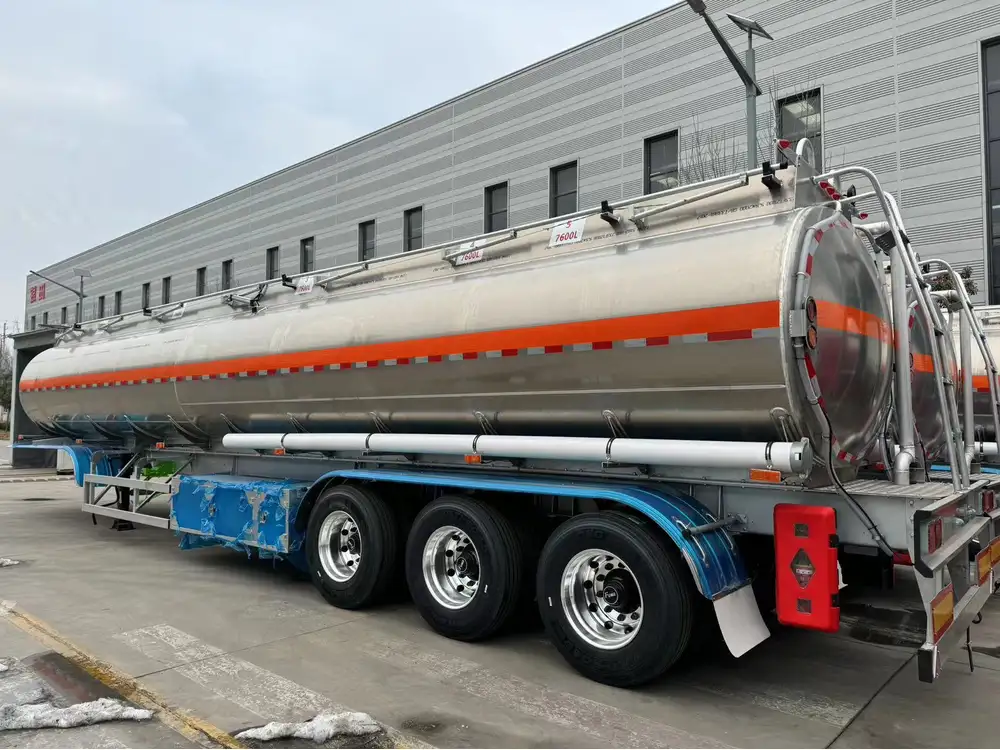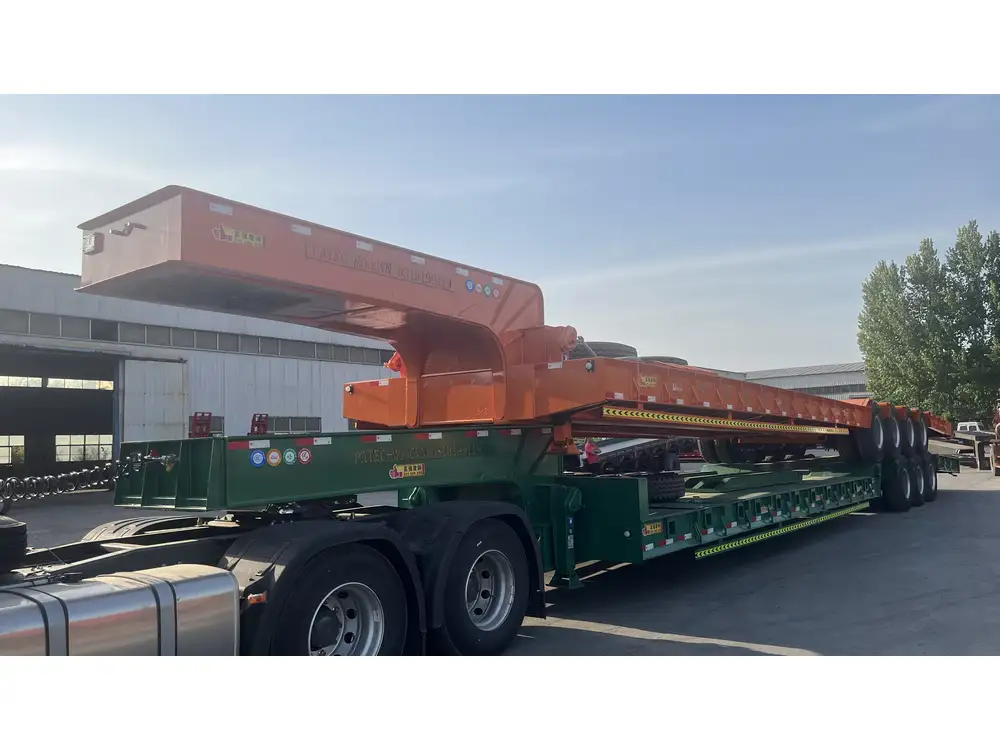When it comes to choosing the right equipment for hauling and transporting materials, understanding the specifications of a 10ft dump trailer is crucial. One of the significant factors to consider is its weight, as this can impact your vehicle’s towing capacity, fuel efficiency, and overall performance. In this guide, we will delve deeply into the weight of a 10ft dump trailer, what factors influence it, and how to select the right model for your needs.
What is a 10ft Dump Trailer?
A 10ft dump trailer is a versatile piece of equipment designed for transporting loose materials such as dirt, gravel, and debris. Their construction usually features a robust frame, hydraulic lift system, and a tilting platform for efficient unloading. Available in various weight capacities, the particular weight of these trailers can differ based on the materials used in their construction, the axle configuration, and the features included.
Key Features of a 10ft Dump Trailer
| Feature | Description |
|---|---|
| Length | 10 feet |
| Width | Typically ranges from 5 to 7 feet |
| Height | Varies based on design, usually around 2-3 feet |
| Material | Steel, aluminum, or composite materials |
| Axle Configuration | Single or tandem axles to accommodate weight |
| Hydraulic System | Provides easy lifting of the dump bed |
| Load Capacity | Usually from 2,500 to 10,000 lbs, depending on design |

How Much Does a 10ft Dump Trailer Weigh?
The weight of a 10ft dump trailer generally falls within the range of 1,500 to 3,000 lbs (approximately 680 to 1360 kg). This weight can vary based on several factors, which include:
Construction Material:
- Steel: More robust and typically heavier, offering better durability.
- Aluminum: Lightweight, leading to reduced overall weight and increased payload capacity.
- Composite Materials: Balances weight and strength, often used in commercial applications.
Axle Configuration:
- Single axle trailers tend to weigh less but may limit load capacity.
- Tandem axle designs offer enhanced stability and higher load limits at the expense of increased weight.
Trailer Features:
- Additional features such as reinforced sides, integrated toolboxes, or extra hydraulic systems can increase the weight.
Breakdown of Weight Classifications
- Lightweight Models: 1,500 – 2,000 lbs. Suitable for light loads like mulch or small landscaping materials.
- Medium Models: 2,000 – 2,500 lbs. Ideal for heavier materials like gravel and sand.
- Heavy-Duty Models: 2,500 – 3,000 lbs. Engineered for extensive resale or industrial projects, capable of handling construction debris.
Factors Influencing the Weight Capacity
Understanding the impact of various factors on a dump trailer’s weight capacity is essential for ensuring the appropriate usage.

Axle Considerations
| Axle Type | Weight Capacity | Best Use Cases |
|---|---|---|
| Single Axle | Up to 3,000 lbs | Landscaping, light hauling |
| Tandem Axle | 6,000 lbs and up | Construction, heavy-duty use |
Key Insights: A single axle allows for lighter designs but limits load capability. Tandem axles distribute weight more evenly, allowing for higher capacity without compromising stability.
Material Strength & Weight
| Material Type | Weight | Durability | Cost Implication |
|---|---|---|---|
| Steel | Heavy | High, prone to rust | Generally more affordable |
| Aluminum | Lightweight | Moderate, corrosion-resistant | More expensive but lightweight |
| Composite | Variable | High, weather-resistant | Moderate to high cost |
Key Insights: Choosing a material impacts both the initial purchase costs and long-term performance. Always consider the trade-off between weight, durability, and price.
Legal Considerations for Towing a 10ft Dump Trailer
Before purchasing or using a 10ft dump trailer, it’s essential to be aware of local laws and regulations regarding towing. These can influence the maximum permissible weight (including the trailer and cargo) and the type of braking systems required.

Towing Capacity Guidelines
- Vehicle Specifications: It’s crucial to check your towing vehicle’s GVWR (Gross Vehicle Weight Rating) to ensure compatibility with the trailer’s weight.
- Braking Requirements: Some regions mandate that if a trailer exceeds a certain weight (typically 3,000 lbs), it must be equipped with a brake system.
- Insurance Implications: Review your insurance policy regarding coverage while towing a trailer, especially for commercial use.
| Towing Capacity | Description |
|---|---|
| Under 3,500 lbs | Typically requires no special permits |
| 3,500 – 5,000 lbs | May require brake assists |
| Over 5,000 lbs | Often requires special licensing |
Choosing the Right 10ft Dump Trailer for Your Needs
Determining the right model depends on various factors, including your primary applications, frequency of use, and hauling capacity. Here’s a systematic breakdown to aid your decision-making process.
Usage Frequency and Weight Considerations
- Occasional Use: If you use the trailer sporadically for light landscaping, lighter models around 1,500 lbs should suffice.
- Frequent Use: For regular hauling on construction sites, prioritize heavier-duty models that can handle increased wear and tear, weighing up to 3,000 lbs or more.

Load Requirements
It’s crucial to calculate how much weight you’ll typically be hauling.
| Usage Scenario | Ideal Load Capacity | Recommended Trailer Model Weight |
|---|---|---|
| Light Landscaping | Up to 1,500 lbs | 1,500 – 2,000 lbs |
| Construction/Demolition | 2,000 – 6,000 lbs | 2,500 – 3,000 lbs |
Budget Flexibility
Consider both initial purchase and long-term operation costs:
- Lower-cost models might save upfront but could incur higher repair costs if made from less durable materials.
- Premium models may have a higher initial investment but typically offer better performance, a longer lifespan, and improved resale value.
Maintenance Tips for Ensuring Longevity
Proper maintenance of a 10ft dump trailer significantly contributes to its lifespan and performance. Here are some essential pointers:

Routine Inspections
- Tire Health: Regularly check tire pressure and tread depth to avoid blowouts.
- Braking System: Inspect hydraulic brakes for any leaks or wear.
- Frame and Body: Examine for rust or damage, as neglect can lead to costly repairs.
Seasonal Maintenance Checklist
| Season | Maintenance Activities |
|---|---|
| Spring | Inspect hydraulic fluid levels |
| Summer | Check for tire and brake wear |
| Fall | Winterize the hydraulic system |
| Winter | Store in a dry place, protect from plowing |
Conclusion
Understanding the weight and specifications of a 10ft dump trailer is crucial for anyone involved in construction, landscaping, or material transport. By comprehensively evaluating weight influences, legal considerations, and usage scenarios, we are positioned to make informed decisions. With routine maintenance and careful selection suited to your workload, maximizing the efficiency of your semi-trailer can be achieved, leading to enhanced productivity and satisfaction in all your hauling endeavors. Whether you’re an occasional user or a heavy-duty operator, selecting the right 10ft dump trailer tailored to your needs can significantly impact operational success.



